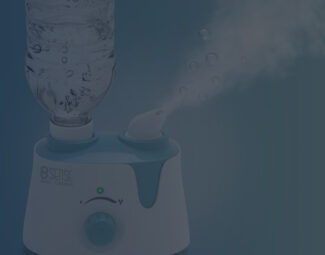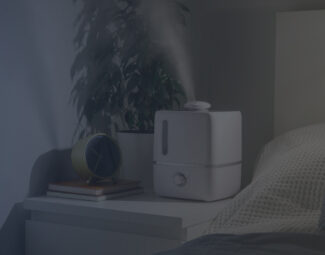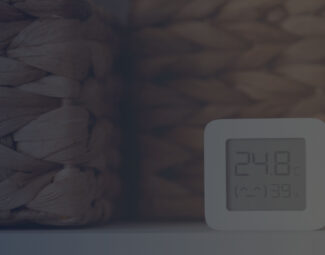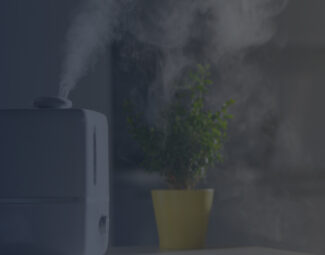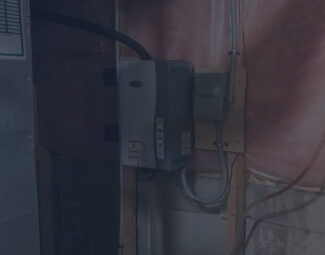Y ou likely spend most of your time indoors, so creating proper conditions health- and comfort-wise is essential for life quality. We mostly tend to think about the temperature and keeping it at a comfortable level throughout the year, but one aspect we mostly overlook and has a bigger impact than we give it credit is humidity.
Irrespective if we are talking about dry or moist air, both situations must be averted as not only can your state of health suffer consequences, but so will your home’s structural integrity. Needless to say, there are methods to keep humidity within proper parameters, and here, we will provide you with info related to what level you must aim to maintain, as well as offer you suggestions when it comes to what you must do to reach the goal.
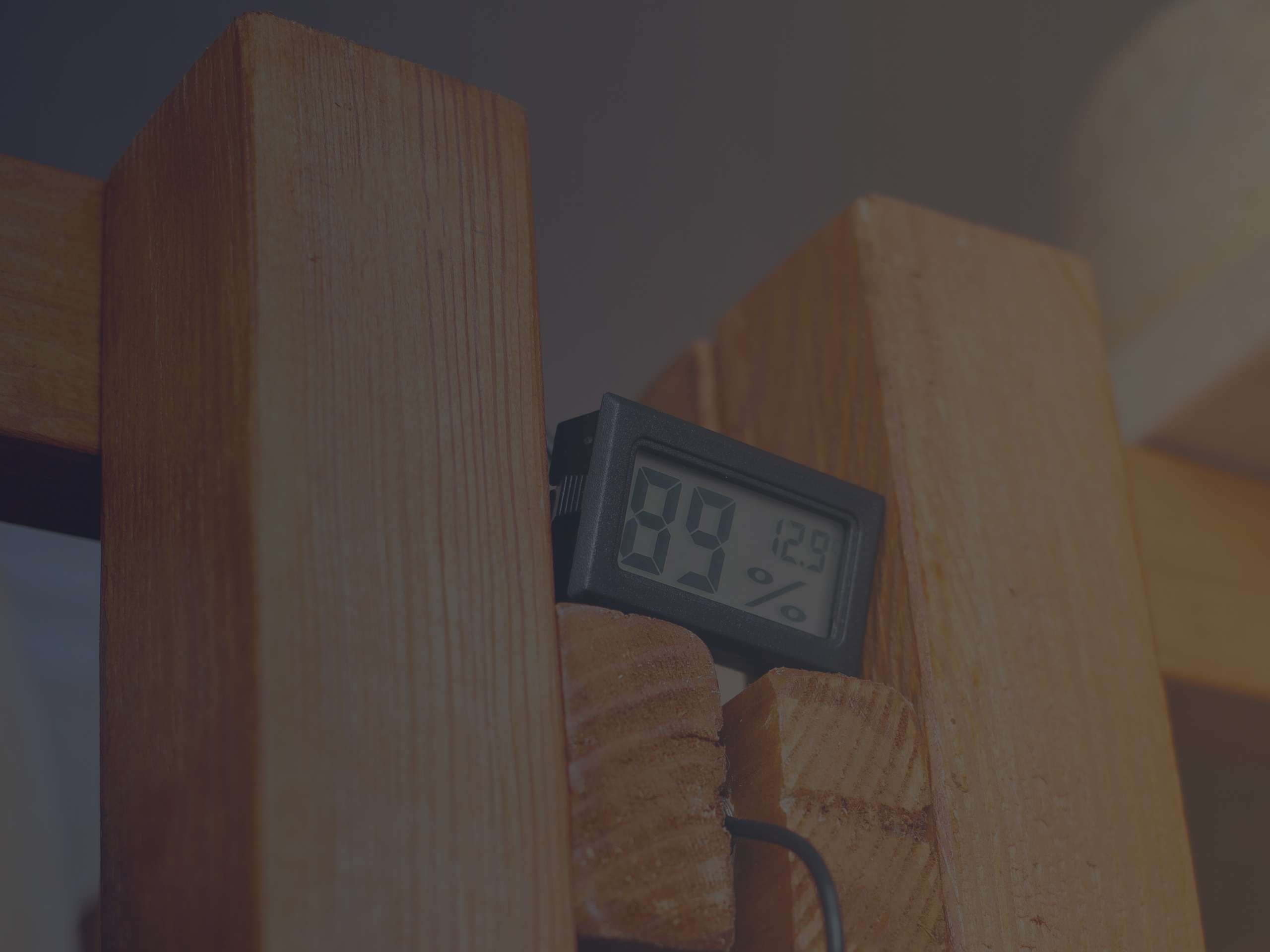
Humidistat in Cellar Indicates High Moisture Levels
Definition: Humidity is the amount of vapor existent in the air. What is referred to as relative humidity or RH is the proportion of water vapor currently in the air in relation to the quantity of water the air can actually hold.
Relative humidity actually fluctuates according to temperature, so when the temperature rises or drops, the air’s ability to hold water changes as well, impacting comfort levels in turn. As we will explain in detail in the following, high and low RH levels impact air quality, so this is an environmental condition factor that you must keep track of at all times.
What Is the Ideal Indoor Humidity Level?
There are two answers to this question – the EPA advises that you upkeep indoor RH from 30% to 50%, while other sources recommend keeping it within 40% to 60%. Regardless of what guidelines you opt to follow, know from the get-go that you are in the clear from health and environmental repercussions as long as dampness doesn’t drop below 30% or raises above 60%.
To handle health effects and illness regardless of season or other factors, the American Society of Heating, Refrigeration, and Air Conditioning Engineers encourages keeping RH levels within 45% to 55%. Use an indoor hygrometer to check humidity and see what action you must take to regulate levels in case they’re off.
Recommended Indoor Humidity According to Outdoor Temperature
Your preference factors in too. Some people like it more when relative humidity is at 40%-45%, while others feel comfier at a slightly higher humidity level. Keep the RH within your preferred range, it’s the best way to go. Just make sure that it never drops below 30% or goes over 60%. However, here are the general guidelines for comfort indoors when it comes to the relationship between temperature and humidity:
- When the temperature is over 50°F, keep indoor humidity under 50%;
- When the temperature is over 20°F, keep indoor humidity under 40%;
- When the temperature ranges from 10°F to 20°F, keep indoor humidity under 35%;
- When the temperature ranges from 0°F to 10°F, keep indoor humidity at 30%.
Problems Caused by Improper RH Levels
As temperatures change throughout the year, so do indoor humidity levels. But the weather isn’t the only one influencing humidity since day-to-day activities can take a toll on RH levels just as well. Nevertheless, regardless of the reason why humidity is higher or lower than it should be, you must take action to regulate it so that your health and even the building’s structural integrity don’t have to suffer as a consequence.

Woman Suffering from Severe Allergies Because of Dry Air
Issues Related to Low Indoor Humidity
In cold weather, the air can’t hold as much water as it normally does. This is why humidity tends to lower significantly during winter.
Solving low humidity is mandatory for your health and home as the subsequent issues emerge if you neglect the matter:
- Asthma and allergy symptoms are worsened;
- The rapid dispersal of cold and flu viruses;
- Higher risk of sinus infections and congestion;
- Dry skin and nose;
- You don’t feel the warmth as much as you should, even with the heater turned on;
- Flooring, wood furniture, and building materials can crack and damage as moisture is pulled from them.
Issues Related to High Indoor Humidity
Throughout summer and typically when the weather is hot, the air retains a more significant amount of moisture, which results in RH levels expanding considerably throughout the warm season.
Fixing high humidity is an issue you must urgently tend to as its repercussions can include:
- Provides growing grounds for mold, bacteria, fungi, mildew, and viruses;
- Frequent and worsened symptoms in asthma and allergy sufferers;
- Condensation forms on windows and walls;
- Damp air ultimately causes you to need to turn up the AC as the environment will feel hotter, leading to discomfort;
- Building structure can be weakened if moisture levels rise too much and aren’t lowered as needed in time.
How to Keep Humidity Levels Under Control
As previously stated, both the cold and hot seasons take a toll on indoor humidity, each in its way. When summer comes, the air will likely get damper, whereas in winter it won’t be able to hold much moisture so it will turn dry, making you more susceptible to breathing infections and other serious issues.

Close-Up of Humidifier Releasing Mist
Fixing Low Humidity Indoors
When RH falls below 30% and dryness appears, some of the issues that arise include dry, itchy skin and sensitivity toward catching colds and infections. To fix the issue, you can:
- Install a furnace humidifier that raises moistness throughout the entire house or use a portable humidifier if RH levels need fixing only in some areas of the house.
- You can place water basins in the proximity of the heating system so that the water evaporates and adds moistness to the air.
- Add houseplants as they not only help stabilize dampness levels but help purify the air of certain airborne pollutants as well, including the likes of benzene and formaldehyde.
Fixing High Humidity Indoors
When RH goes above 60%, some of the issues it leads to include mold development, sleep uneasiness, and humid conditions. To fix the situation, you should:
- Use a crawl space dehumidifier to ensure structural stability is not compromised by excessive moisture in this specific area. You should also use a room dehumidifier that you can move from one area to another as needed and fix high RH wherever needed in the house.
- If you have humidifiers, discontinue their use during the warmer seasons as it will lead to excess dampness indoors.
- You can use air conditioners to make the environment feel cooler while also removing moisture from the air as most systems feature this capability.
- Use exhaust fans to circulate the air and rid the atmosphere of immoderate moistness in the process as well.
Conclusion
Whether you choose to uphold moistness within the more stringent 45% to 55% range endorsed by the ASHRAE, or you go for the 40% to 60% or 30% to 50% ranges endorsed by the EPA and researchers, it’s more of a preference matter. What matters is that the extremity limits are not exceeded.
As long as you follow these general guidelines, indoor dampness will provide you with comfortable living conditions and you won’t suffer any of the aforementioned repercussions, life quality enhancing as a result. Seeing how there are more than enough ways to uphold RH within normal parameters, as we previously explained, you won’t have much trouble creating an ideal habitat for you to live in.




